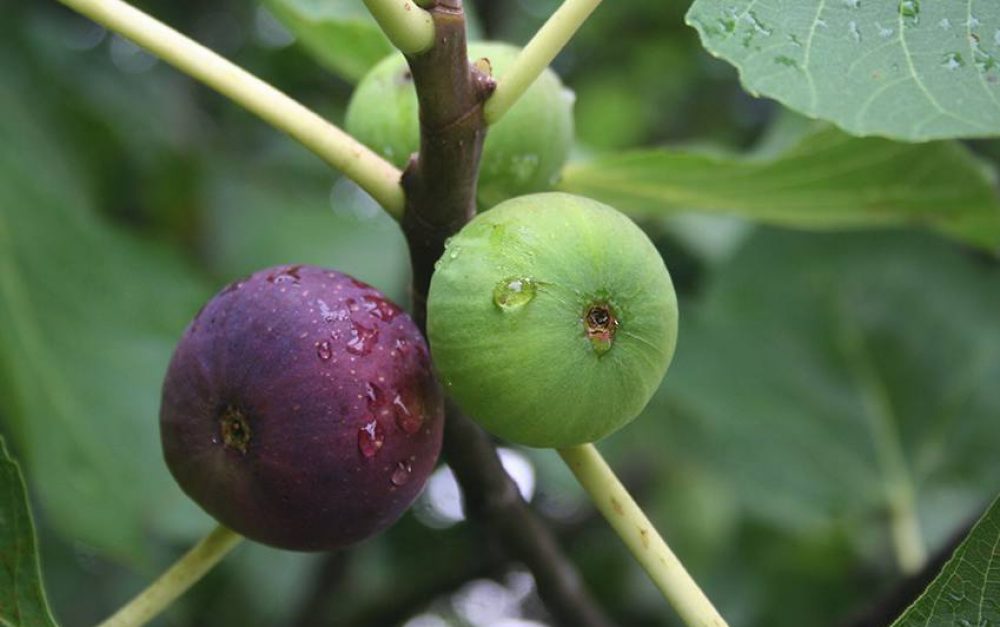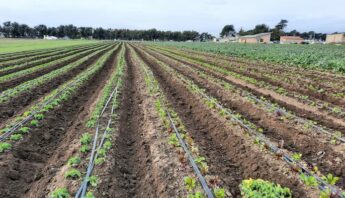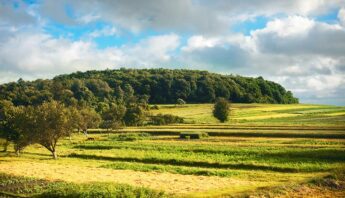On the small, mixed-fruit orchard I farm along California’s Central Coast, confused apple trees spurt scattered blossoms in December, signaling that the weather patterns of yesteryear are being replaced by something new. With increasing drought, heat and disease pressure, any farmer will attest to the challenging impacts of climate change these days.
Curious how other ecological farms are adapting, I chatted with some farmers on the Central Coast and also sat in on an EcoFarm Conference session in which a panel of organic farmers and advocates discussed climate change adaptation strategies. While several of my colleagues at PAN are working on the big picture through research and political advocacy, growers are adapting day-to-day to increase their self-sufficiency, conservation and reliability.
Here are some of the innovative tactics that stood out in my conversations:
Farming the soil
Organic growers often claim they “farm soil” more than fruits or vegetables. In the face of climate change, they hold fast to this mantra through production and application of compost. Adding compost to soil increases the ratio of organic matter, ultimately increasing soil’s water retention abilities. Moreover, compost adds a source of nitrogen that isn’t water soluble, making nitrogen leaching less likely and avoiding the creation of nitrous oxide.
Al Courchesne from Frog Hollow Farm put an on-farm composting system in place for this very reason. “It’s all about the soil,” he says. “Building up the biology of the soil is an adaptive strategy we can all use.” Currently the regulations for organic compost production are difficult to satisfy on a small scale, but efforts are being made by CalCAN and others to change this so more farmers can realistically “make their own.”
Flexible crop plans
To keep up with a changing climate, adapting one’s crop plan becomes a necessary and annual task. Where I farm in Watsonville, we are adapting through varietal selection. A century ago Watsonville’s landscape of rolling hills was decorated in apple orchards, yet due to fewer winter chill hours (and other economic influences) apples are now a minority crop, replaced by endless rows of berries. Recently, we have been planting more figs and stone fruits — heat-loving trees that are outperforming our apples.
Another way crop plans are modified is through an adapted planting schedule. Judith Redmond of Full Belly Farm shares how their early and late season crops are now the most vulnerable: “We keep trying, but we haven’t been able to hit our early season tomatoes like we have in the past.” While early and late-season crops typically yield much higher market prices, the risk of using land and resources for a crop with waning success is a risk less farmers are willing to take.
Tapping the sun
Although not available to every small grower, some larger, more established operations are striving to produce their own power by going solar.
Full Belly found it cost competitive to put in a 27 kilowatt solar system on a 12.5 acre orchard, which is now completely off-grid. They’ll use the solar power to pump irrigation water to their tree crops, and are excited to one day market “solar powered almond butter!”
Carbon sequestration
Amid conversations on energy and carbon footprints, the practice of carbon sequestration is creating a lot of buzz. This process removes carbon dioxide from the atmosphere and holds (or sequesters) it — in this case, in the soil.
It’s a win-win, removing greenhouse gases from the atmosphere while ultimately aiding future plant growth. Some of the most common on-farm techniques to sequester carbon are: spreading compost, growing cover crops and employing no-till management. There is also a carbon credit program that provides compensation to farmers who adopt these practices.
Protecting workers
A harsher climate also takes a toll on the people who work in the fields. According to a UC Davis study, heat exposure has become the number one health concern for farmworkers, with pesticide exposure as number two. Labor shortages aside, protecting and supporting existing field hands has become a challenge with temperatures that are steadily rising. Full Belly
Farm is grappling with this new reality, and taking initiative to protect people working in the fields with more frequent breaks, safety trainings and shorter days when necessary.
Ecological growers are striving for climate resilience through biological, environmental and communal means. Creating farm systems that can adapt to climate change requires a multifaceted approach. While organic farmers are not alone in the quest for climate resilience, they have historically played a lead role in developing systems of sustainability in the United States. There’s no doubt they will continue this leadership on holistic innovation and agroecology into the future.
Jane Kuhn is an agroecology intern with PAN, and a farmer working at a small orchard in Watsonville, California.






